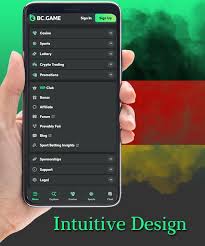bcg-germany
Understanding Bc.G Bridging Business and Technology

Understanding Bc.G: Bridging Business and Technology
The modern business landscape is constantly evolving, characterized by rapid technological advancements and shifting consumer expectations. In this dynamic environment, the integration of business strategies and technological solutions has become paramount. This is where Bc.G comes into play, offering innovative approaches that help organizations navigate the complexities of the digital age. For more insights into this exciting field, visit Bc.G https://bcg-germany.com/.
The Concept of Bc.G
Bc.G represents an intersection between “Business Consulting” and “Technology,” reflecting a holistic approach to solving organizational challenges. The core philosophy behind Bc.G is that businesses can no longer afford to operate in silos; instead, they must embrace a collaborative mindset that leverages technology to enhance operational efficiency, drive innovation, and create value for customers.
Key Elements of Bc.G
The Bc.G framework is built on several fundamental elements that together create a comprehensive strategy for business success:
- Data-Driven Insights: In the age of information, leveraging data analytics is crucial for informed decision-making. Bc.G emphasizes the importance of utilizing metrics and analytics to guide business strategies and predict market trends.
- Agile Methodologies: Flexibility and adaptability are key to thriving in a volatile business environment. Bc.G incorporates agile practices that promote iterative development, quick responses to change, and customer-centric approaches.
- Technology Innovation: Continuous investment in technology is essential for remaining competitive. Bc.G encourages companies to explore emerging technologies such as artificial intelligence, blockchain, and cloud computing to optimize their operations.
- Customer-Centric Strategies: Understanding and anticipating customer needs is at the heart of Bc.G. Companies are urged to create customer experiences that are not only satisfactory but also delightful, fostering loyalty and long-term relationships.
- Collaboration and Culture: A strong organizational culture that promotes collaboration and innovation is vital for successfully implementing Bc.G strategies. This involves breaking down departmental barriers and creating cross-functional teams.
Industries Benefiting from Bc.G
The Bc.G approach has proven beneficial across various industries. Here are a few sectors that have experienced significant transformations through the application of Bc.G principles:

1. Financial Services
The financial sector is undergoing a digital revolution, with fintech companies disrupting traditional banking models. Bc.G enables financial institutions to adopt new technologies, enhance customer service, and streamline operations through automation and data analytics.
2. Retail
Retailers are increasingly focusing on omnichannel strategies, integrating brick-and-mortar stores with online platforms. Bc.G helps them utilize technology to create seamless shopping experiences, manage supply chains, and understand consumer behavior through data.
3. Healthcare
The healthcare industry is leveraging Bc.G to improve patient outcomes through telemedicine, electronic health records, and personalized medicine. By embracing technology, healthcare providers can offer more efficient and effective care.
4. Manufacturing
In manufacturing, Bc.G drives the adoption of Industry 4.0 principles, including automation, IoT (Internet of Things), and smart factories. These technologies enhance productivity, reduce costs, and improve supply chain management.

Implementing Bc.G in Your Organization
For businesses looking to implement Bc.G principles, there are several steps to consider:
- Assess Current State: Evaluate existing processes, technologies, and organizational culture to identify areas for improvement.
- Define Objectives: Clearly outline your business objectives and the role technology will play in achieving them.
- Invest in Education: Provide training and resources for employees to upskill and embrace new technological tools.
- Foster Collaboration: Create cross-functional teams that can bring diverse perspectives and expertise to the table.
- Measure Success: Develop KPIs (Key Performance Indicators) to assess the effectiveness of implemented strategies and make data-driven adjustments.
Challenges in Adopting Bc.G
While the benefits of Bc.G are evident, organizations may encounter challenges in its adoption. Some common obstacles include:
- Resistance to Change: Employees may be hesitant to embrace new technologies or methodologies, fearing disruptions to their routines.
- Resource Constraints: Smaller organizations might struggle with the financial and human resources needed to implement comprehensive Bc.G strategies.
- Data Security Concerns: As organizations collect and analyze more data, ensuring its security and compliance with regulations becomes critical.
Future of Bc.G
Looking ahead, the future of Bc.G appears promising. As technology continues to evolve, businesses will increasingly turn to innovative solutions to meet the growing demands of their customers. Bc.G will likely see further integrations with advancements in artificial intelligence, machine learning, and data science, enabling companies to achieve unprecedented levels of efficiency, personalization, and impact.
Conclusion
In conclusion, Bc.G represents a vital paradigm shift in how organizations operate in the digital age. By bridging the gap between business and technology, companies can harness the power of innovation to not only survive but thrive in an ever-changing landscape. Embracing Bc.G principles will be crucial for businesses aiming for long-term success in the 21st century.
